One of the Most Thought Out Camping Knives I’ve Ever Used
As the biggest fixed blade made by Schwarz knives so far, I had some big expectations about the Lost Trail 5, especially because TJ Schwarz gave a detailed run down of the knife when he announced it.
The short version of that video is that the LT5 is a camp knife that can perform as a “one-knife solution” , and gave it some very deliberate elements to make it good at a certain range of tasks:
Key Takeaways
- The spine is mostly flat to help with batoning
- The spine is a hard 90 degrees for fire steel scraping,
- The steel is A2 at high hardness but still seems to compromise well with toughness,
- The blade stock is thin (relative to other outdoor knives),
- The edge is optimized for carving wood,
- And the sheath is built to last.
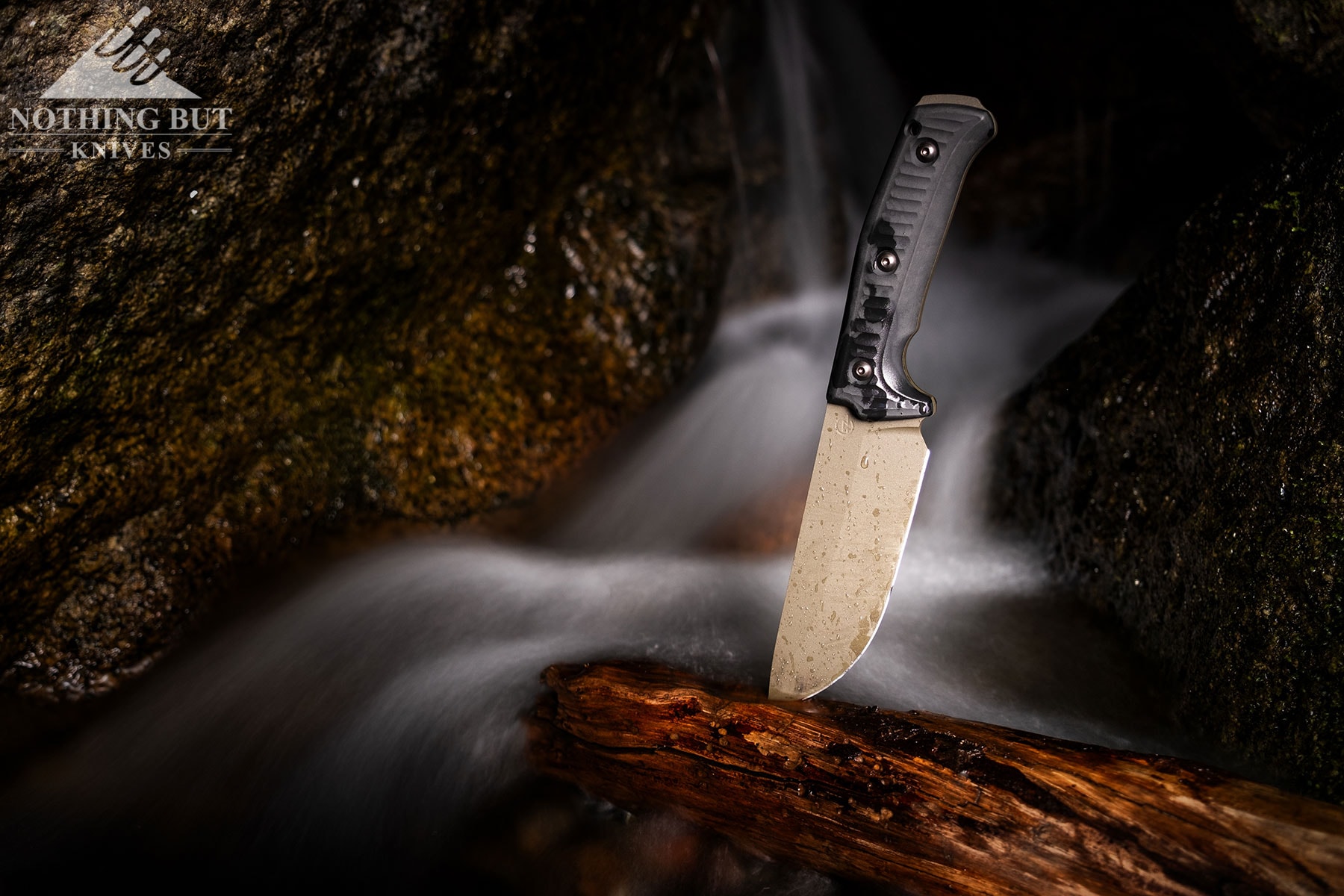
There are a dozen other little details about each of those elements that make the knife one of the most high functioning outdoor knives I’ve tested in a long time, but here’s the short version: It works. Everything the Schwarz team set out to do with the Lost Trail 5 they accomplished in perfect form.
Not only does it process wood like a champ, it feels great in the hand, and the sheath is a breath of fresh air in a wide world of fixed blade knives with under-developed carry solutions.
There are a couple of ergonomic details I found myself wishing were a little different, but nothing that can’t be swept away as personal preference.
Specifications
| Overall Length: | 10.2” |
| Blade Length: | 5.0” |
| Blade Steel: | A2 w/ Cerakote coating |
| Hardness: | 62 – 63 Rc w/ Cryo |
| Blade Thickness: | 0.156” (4 mm) |
| Blade Shape: | Standard |
| Blade Grind: | Sabre |
| Handle Length: | 5.2” |
| Handle Material: | Richlite |
| Sheath: | Kydex w/ leather belt loop (standard spacing) |
| Weight: | 9.9 oz (14.5 oz w/ sheath) |
| Designer: | TJ Schwarz |
| Made in: | USA |
| What I Liked | What I Didn’t Like |
|---|---|
| Excellent sheath | Maybe the spine could use some jimping |
| Great for batoning | Rides a little high for me on the belt |
| Good for carving wood | |
| Wide handle with an easy grip |
In Use
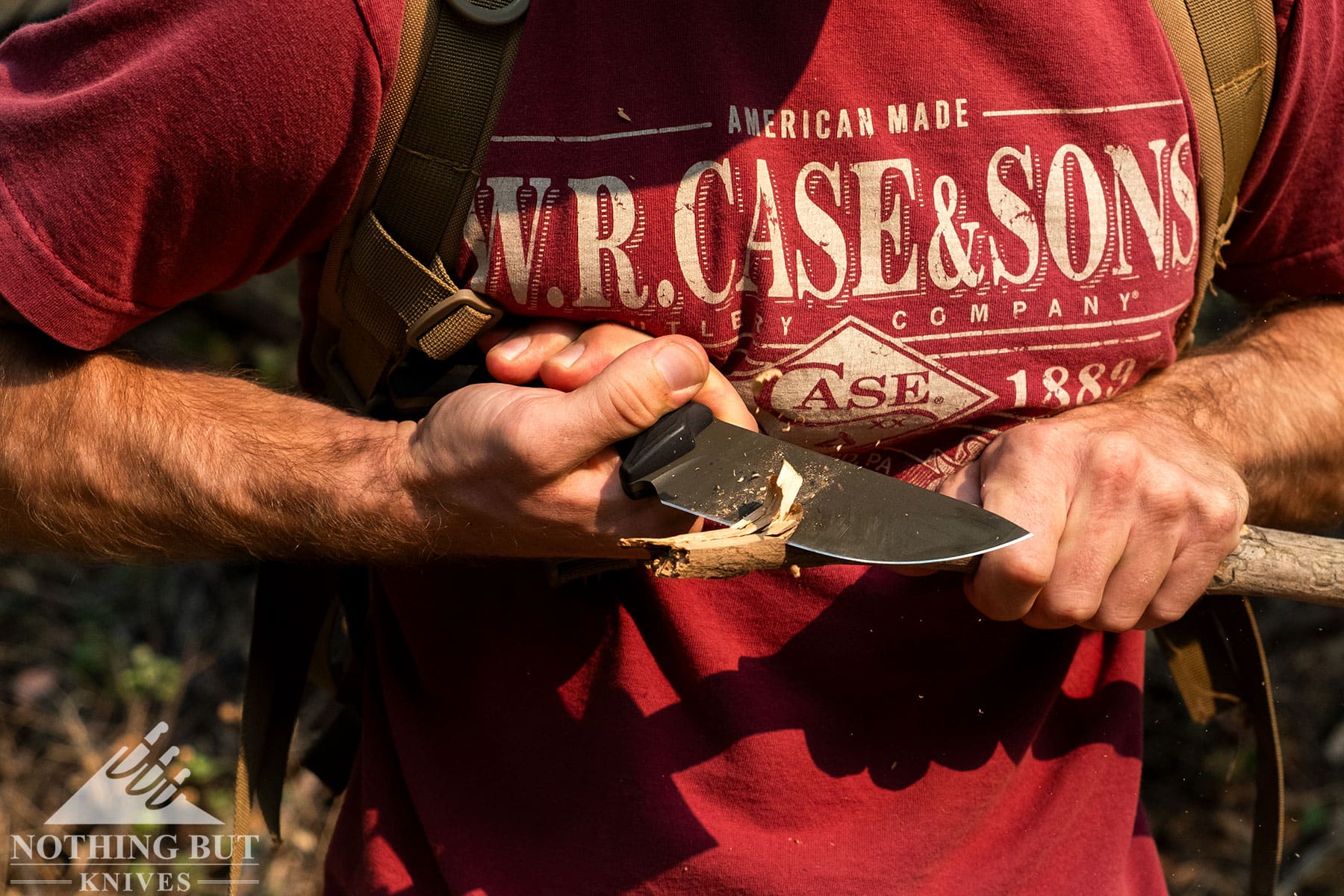
It’s a camp knife, so it needs to be able to process wood and cut whatever random ropes, branches, stray threads, and even food happen to be around.
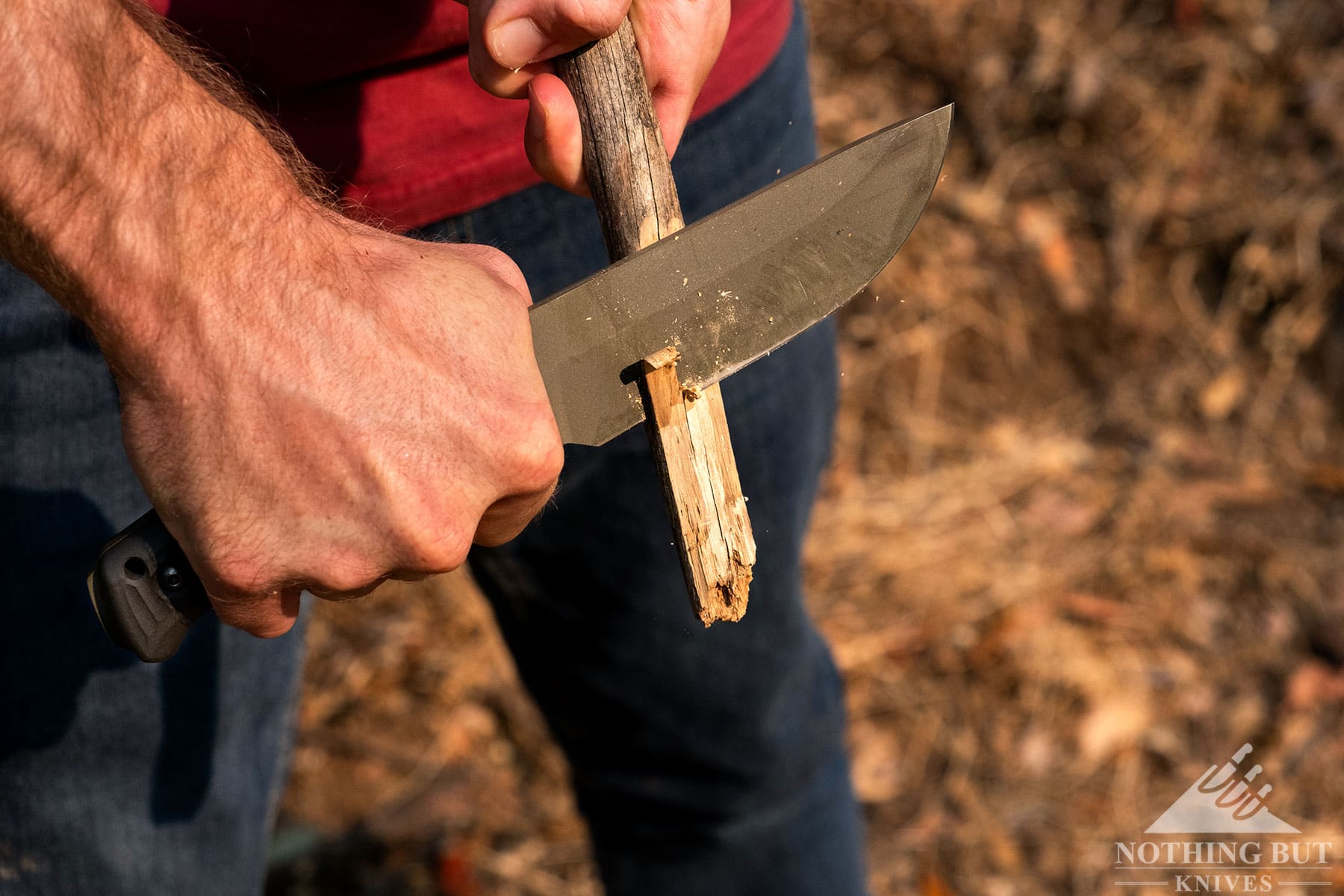
Carving: It cuts finer than I expected it to. When you put it to wood, it wants to shave. That makes it great for getting fine points on a tent stake, and shaping in general. It feels almost reluctant to clump out big chunks of wood in a chest lever, but that might be down to my own poor technique.
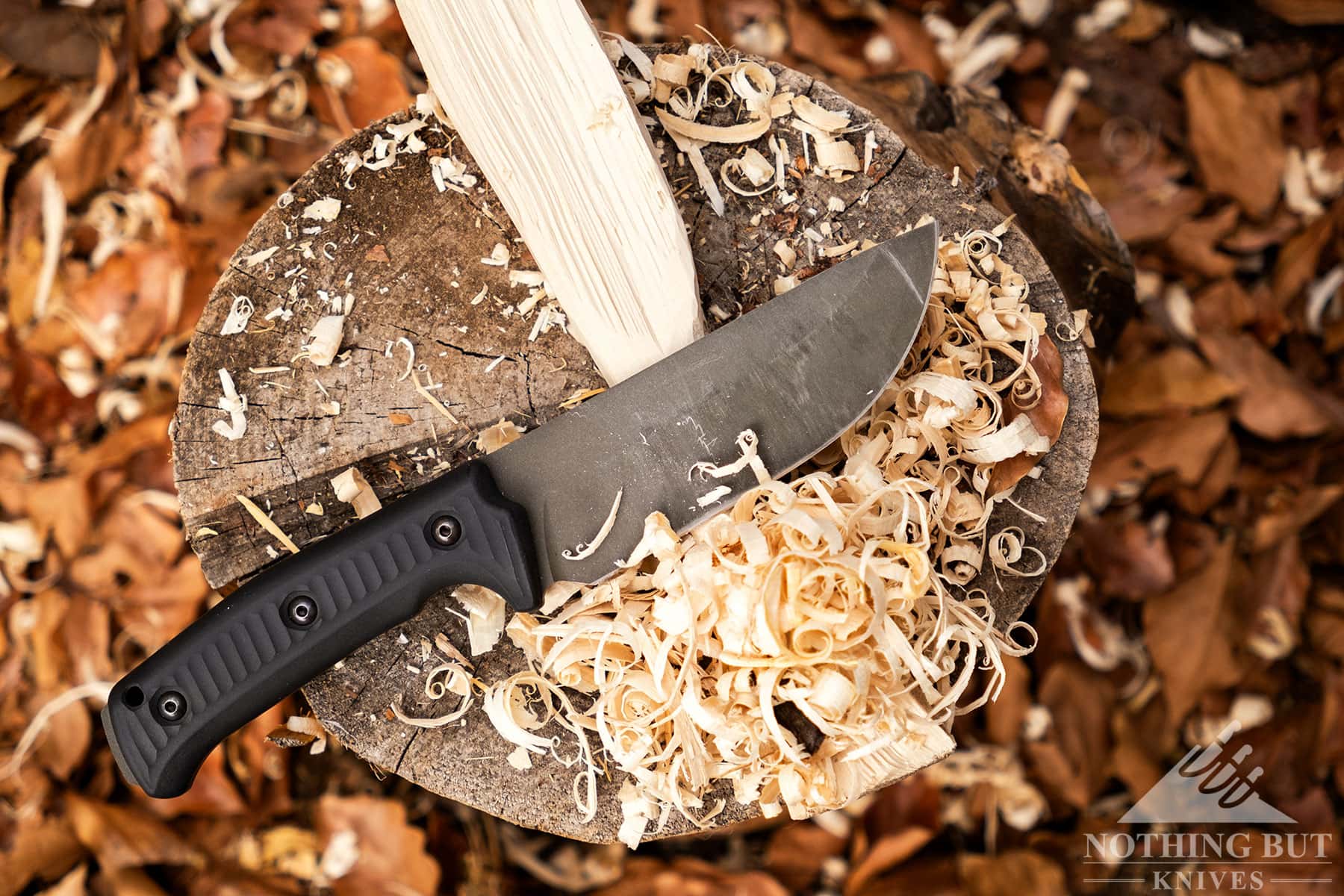
Feather Sticks: It’s dreamy for making feather sticks. The handle is forgiving, so my hand didn’t get too crampy from making a couple of large feather sticks, and the edge allows for a wide margin for error in getting thin, easily-ignitable curls off wood.
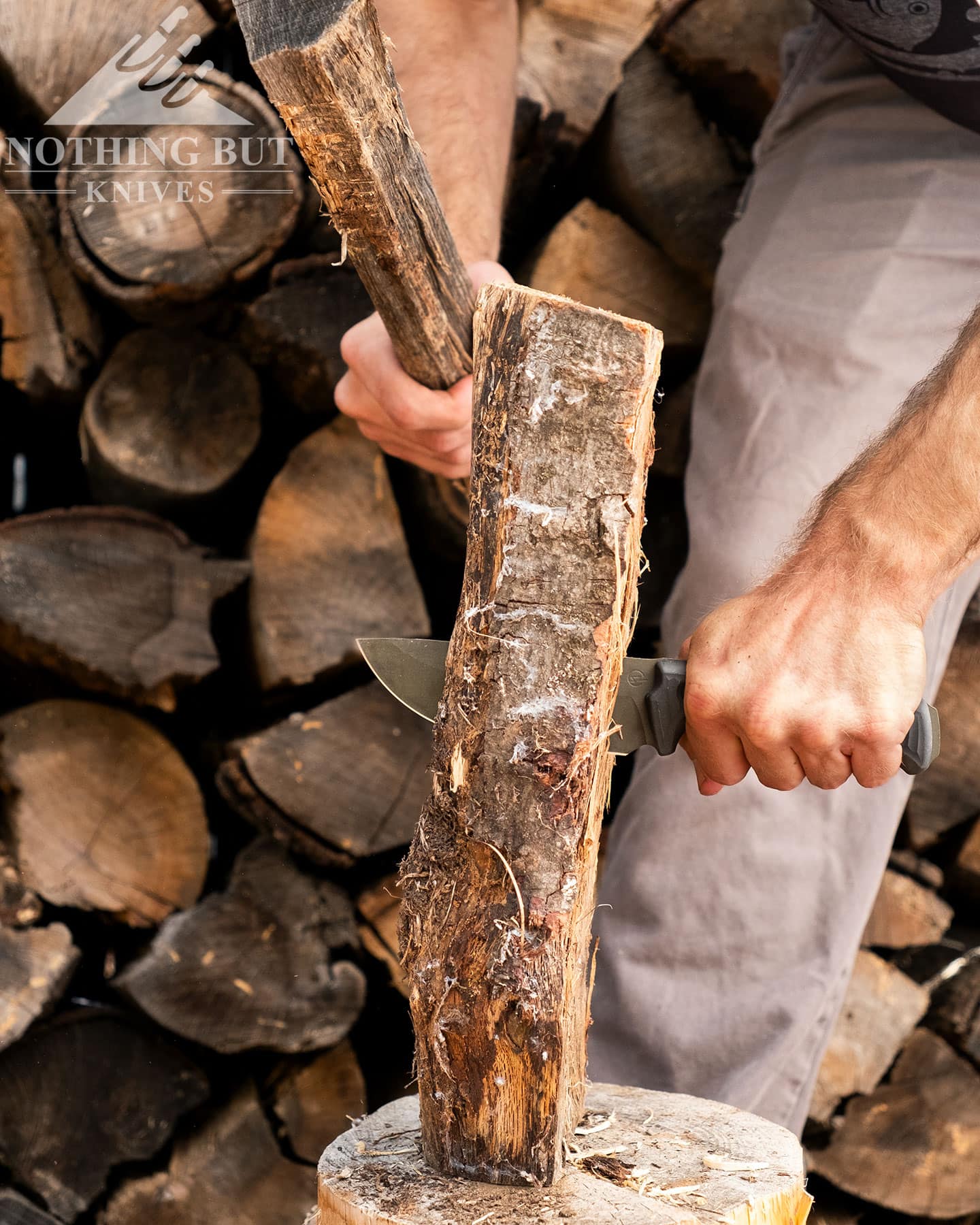
Batoning: Absolutely one of the best knives for batoning I’ve ever used. Not only does the blade start cracking logs quickly (even pieces of oak started to crack when the knife was less than halfway down), there’s a lot of flat space to hit the spine. Even the drop point shape is slight, so when there’s only a bit of tip sticking out the other side, I can move the blade down effectively.
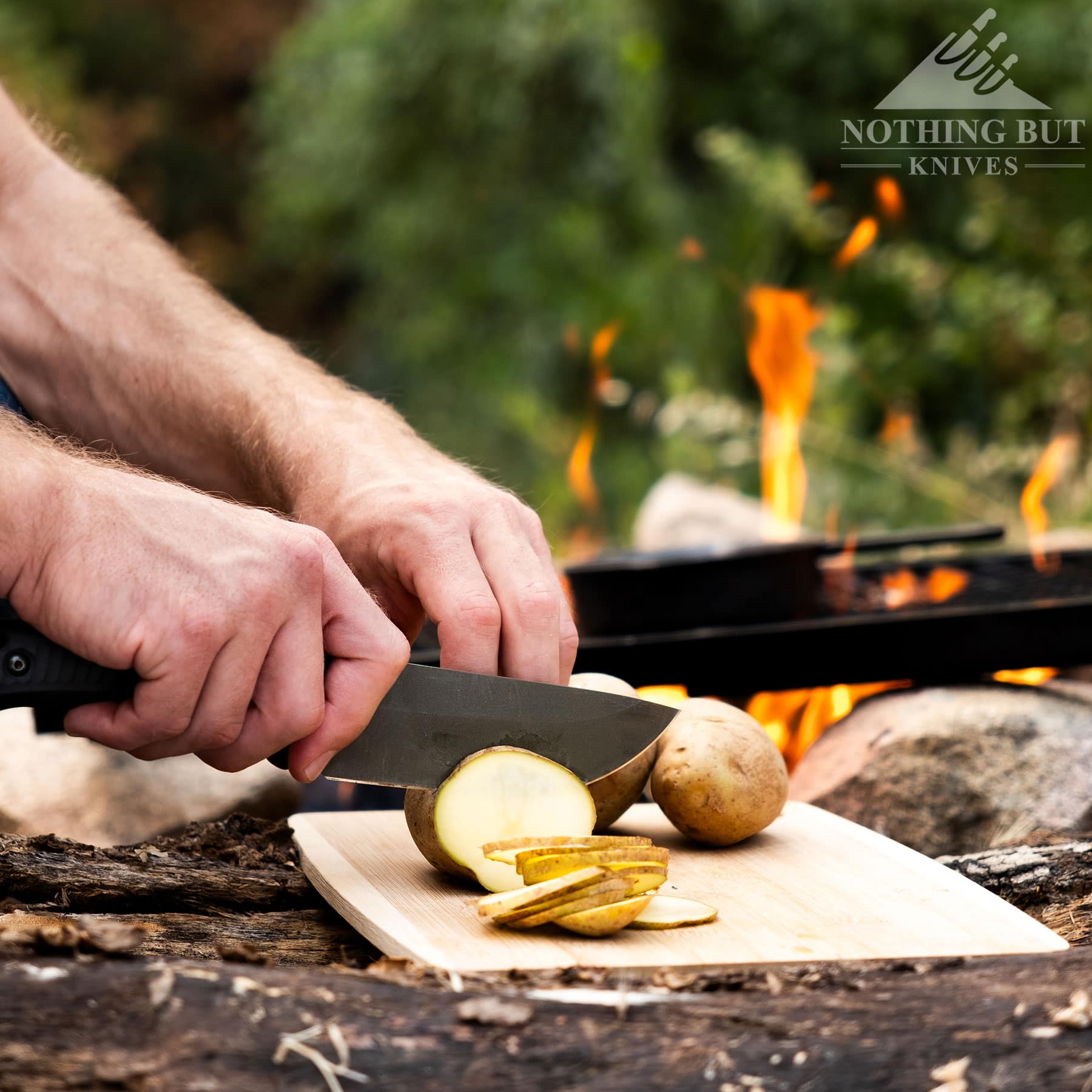
Food Too: I did some minimal cooking with it. Stray carrots and potatoes and chunks of meat for a stew-like dish that I would be embarrassed to serve to anyone. But, like a lot of survival and bushcraft knives, the LT5 can get it done. It won’t look pretty, and it’s far from my preference, but the tall blade makes for nice scooping, and I didn’t hate the way it cut meat.
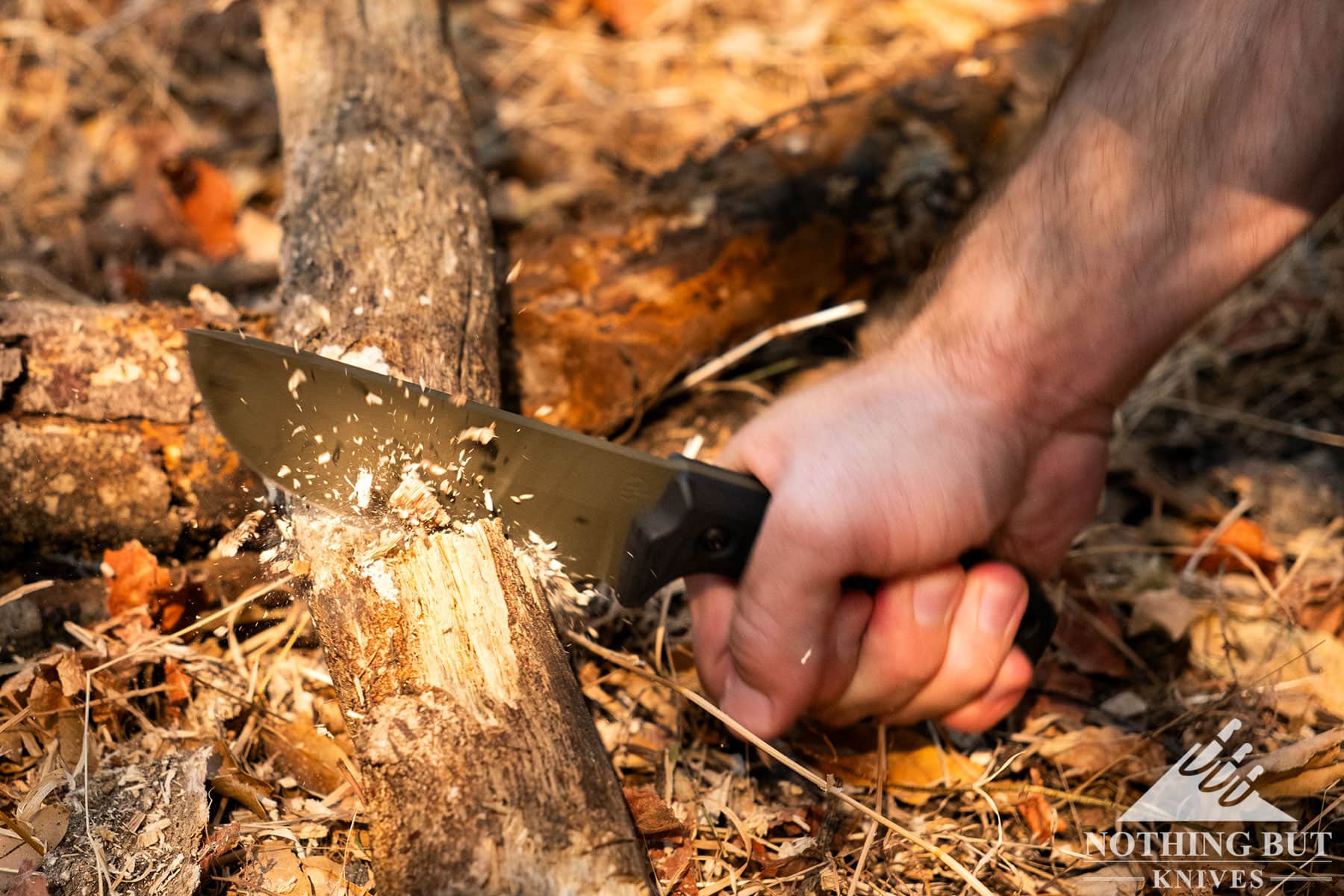
Chopping: Schwarz says he had “light chopping” in mind for it. Which I assume means sapling sized branches. I’d certainly recommend keeping it to that size most of the time, but I tried it through a few larger branches approaching the 6-inch diameter mark and found the LT5 handled it just fine. Some of that is thanks to the handle. There’s some generous shaping at the pommel to keep the knife firmly in hand, plus the Richlite scales have a lot of natural grip.
But the blade has just the right amount of bite where it hacks into wood and takes out chunks without sinking in so far it gets stuck.
The edge held up, too. It still cut paper with just a few rough patches after our first full day of testing. So maybe now’s a good time to address the steel.
The Blade and Steel
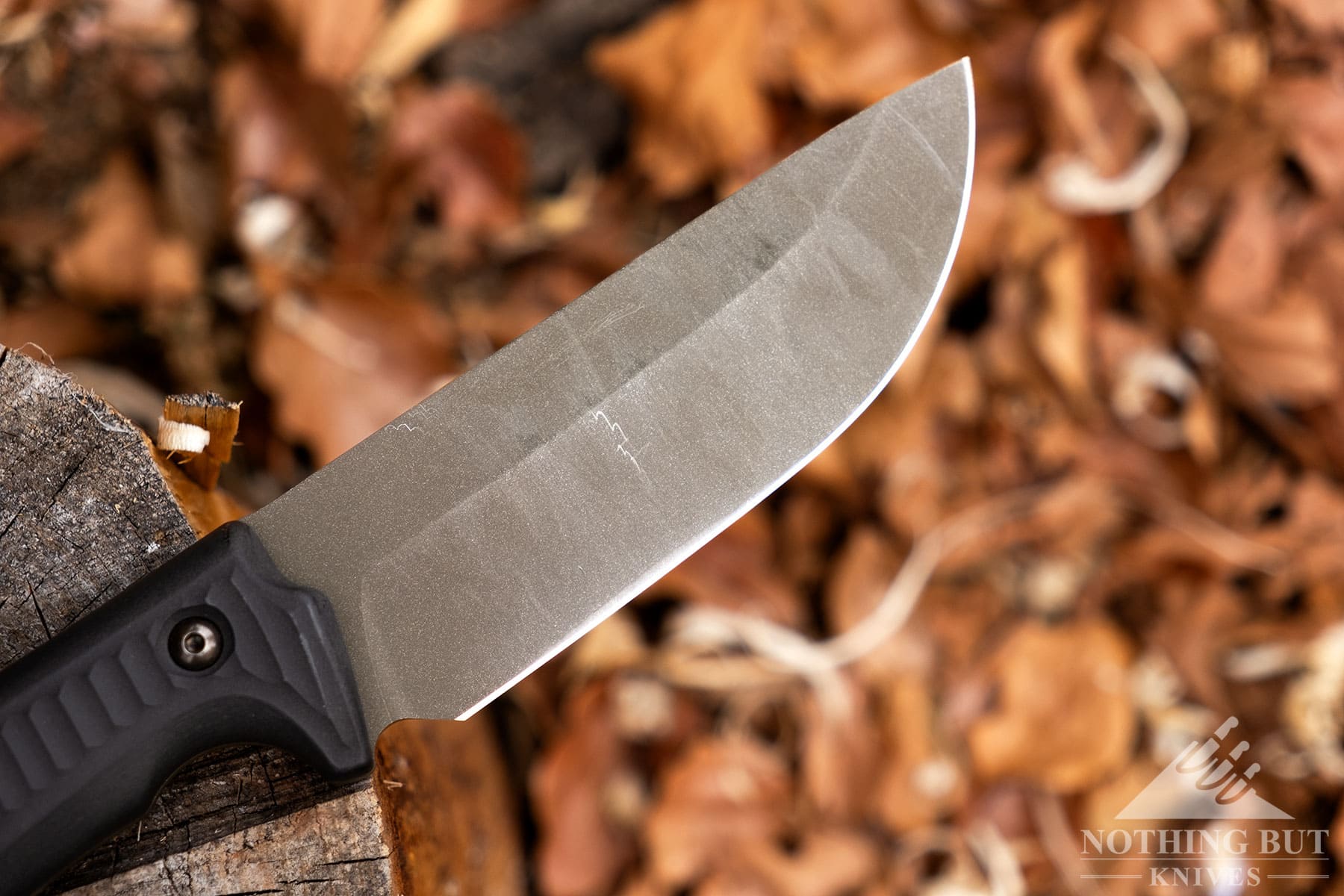
I don’t have a lot of experience with A2 tool steel. But I chopped, scraped, and carved with this knife for a full day and barely saw any deformation.
Schwarz goes into some detail about why they chose A2 and their process for dialing in the hardness for the LT5.
A2 has a “flat curve in toughness as you get into higher hardnesses” as Schwarz puts it, which basically means it doesn’t lose toughness as quickly as other steels when it gets over 60 HRc (in this case around 63).
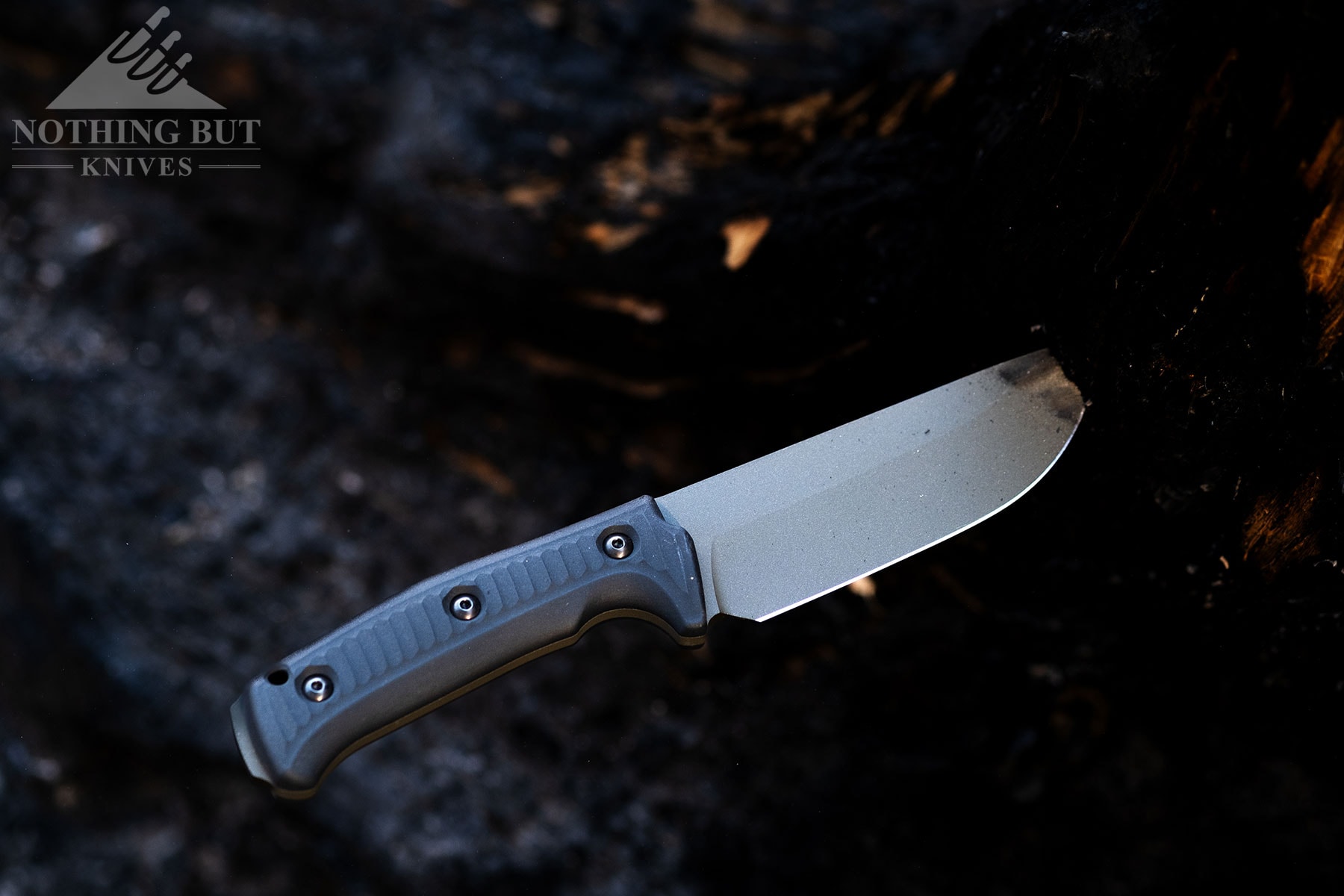
It’s oddly satisfying to hear how they landed on that particular hardness. They made a bunch of prototypes, had them heat treated across a range of hardness (59 – 66), then they tested all those prototypes until they found the one that performed the way they wanted.
Apparently 62 HRc is pushing the limits of A2 a little bit, but it feels like that heat treatment is paying off, and it particularly likes this grind.
The Handle is In the Goldilocks Zone
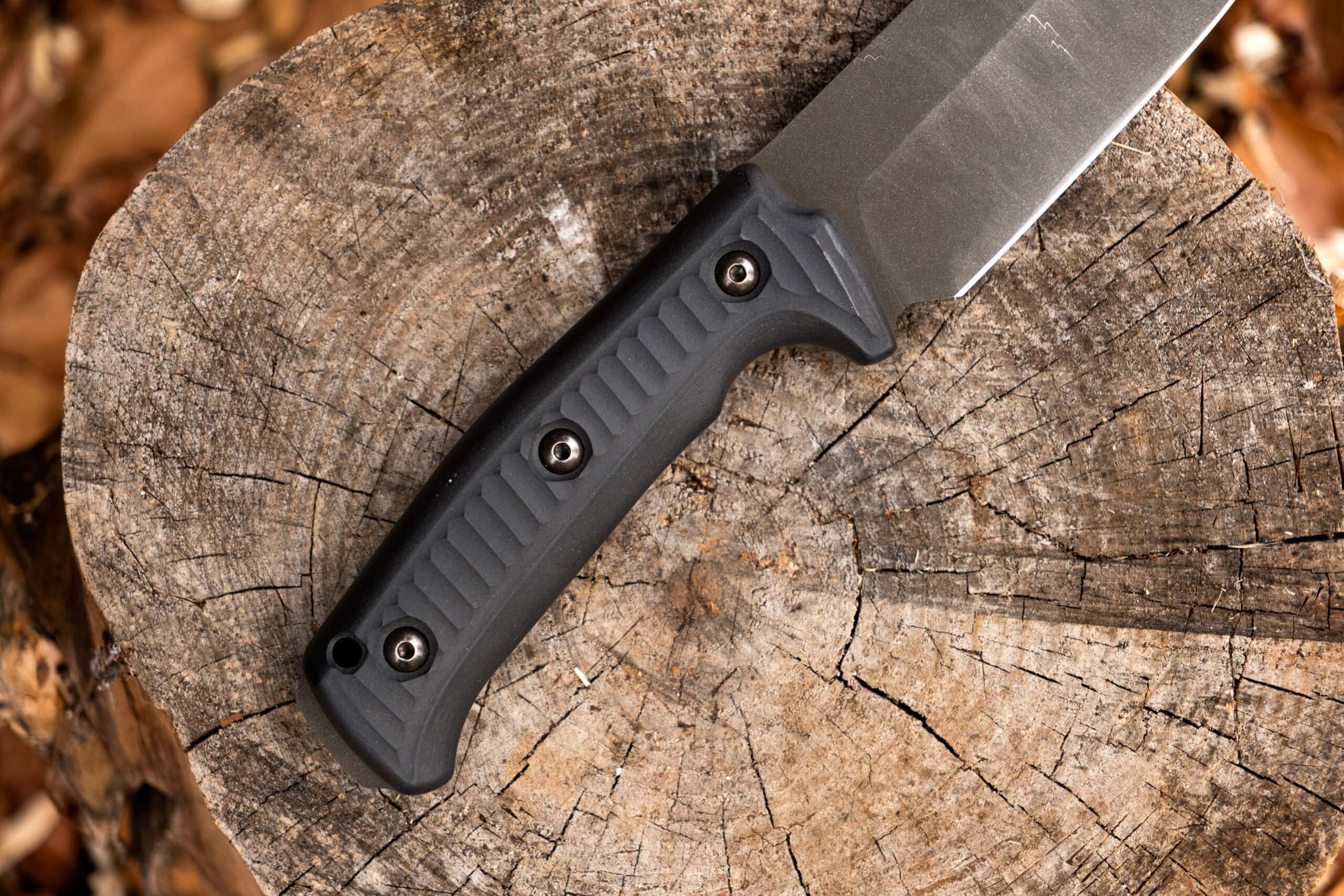
They went with Richlite because it has a soft texture. Schwarz compares it to Micarta, but this handle has a little more cushion than that. Even burlap Micarta doesn’t quite have the pillow feeling that the Richlite on the LT5 has.
There were also manufacturing reasons for the material choice. He wanted the handle to be a certain thickness and color, and Richlite was the most viable option for making that handle at scale.
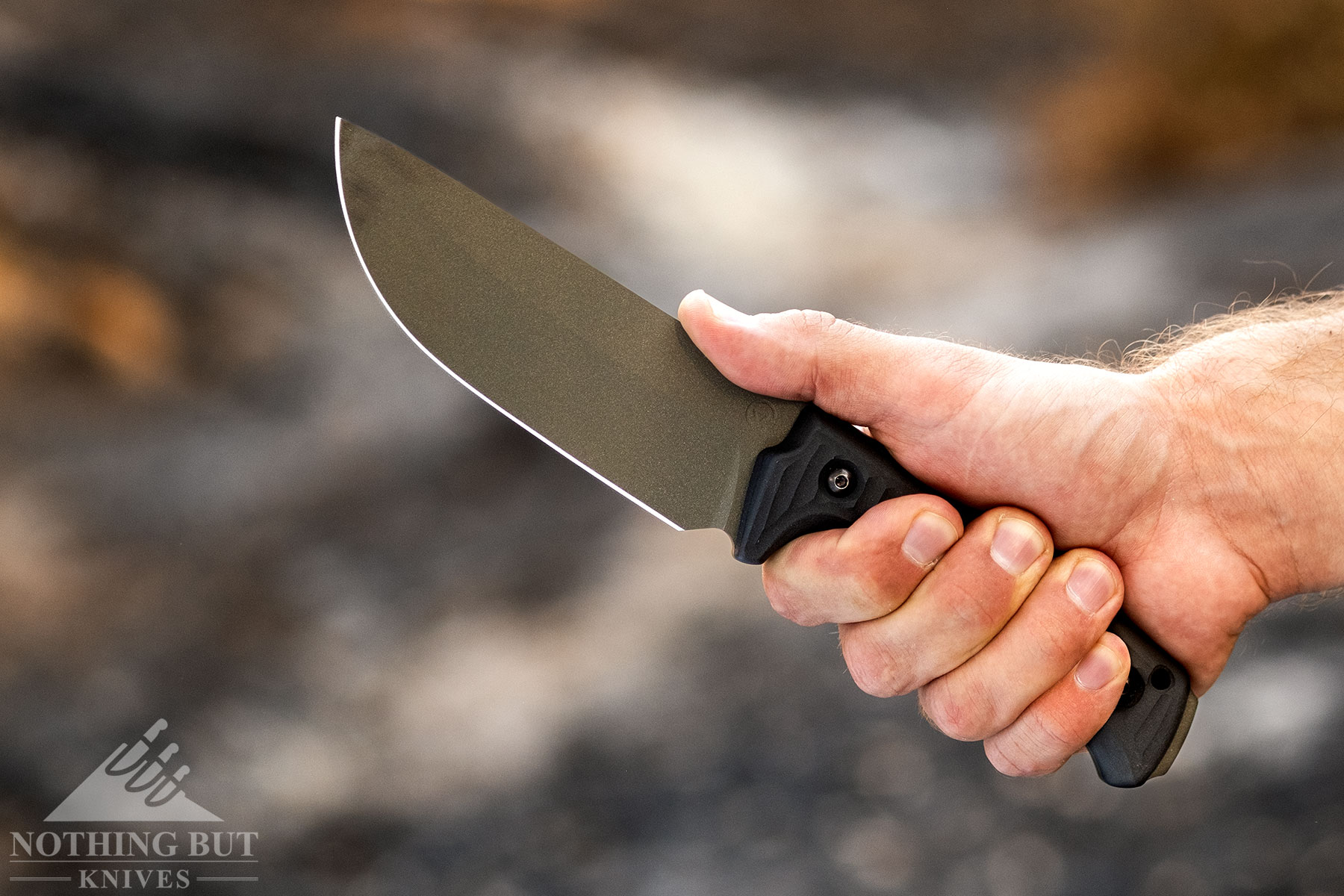
I have no problems with any of these decisions. This handle feels great.
- It’s grippy without being sticky (anyone who’s dealt with cheaper rubber handles might know what I’m talking about);
- It has plenty of space for different grips, but still has some shaping at the bolster and pommel areas to keep the knife in place;
- The thickness is just about right for gripping over a long period of time without feeling much strain;
- The inward-curving shape of the handle and the pommel swell lock this knife in as a great chopping tool;
- The scales are smooth enough not to rub the hand raw during heavy use, but textured enough help my grip;
- And it has the right width, length, and contouring to make indexing the edge easy.
My Only Complaints
The finger well feels just a little too small for my index finger to seat into fully, and sometimes my thumb goes searching around the spine for jimping that isn’t there.
The finger well is related to another thing I’m still debating with myself about: the finger guard. Every time I squeeze my finger up against that guard I think how neat it would be if it wasn’t there so I could choke up closer on the blade when I get more serious about carving.
I don’t know that I would actually offer up any of those things as recommended changes for the knife, though. Ergonomics creates tricky, subjective problems. The LT5 is plenty comfortable, and I’d worry that making changes to it would change how it behaves with its sheath.
Speaking of which.
The Sheath Does Everything Right
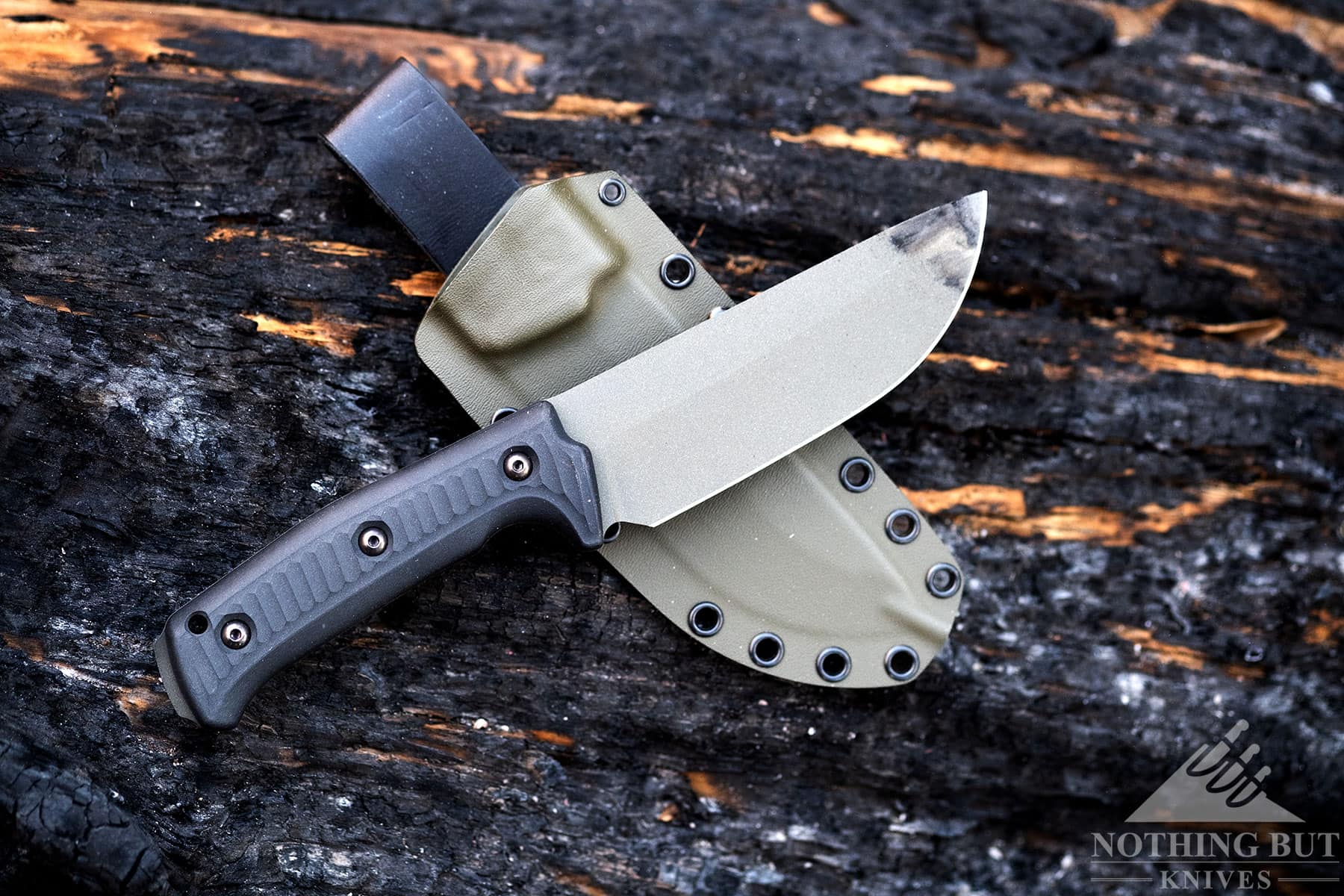
As good as the knife is, the star of the show is the sheath. They heavily workshopped the way it rides, bolstered high-stress points like the drop rig assembly, and even shaped it so it wouldn’t scratch the blade through repetitive drawing and sheathing.
Here are the cool things about it:
- Rides comfortably;
- Strong retention (but not too strong);
- Holds the knife primarily at the bolster and the tip of the blade so the finish doesn’t get scratched,
- Tek Lok compatible
- Steel drop-rig assembly
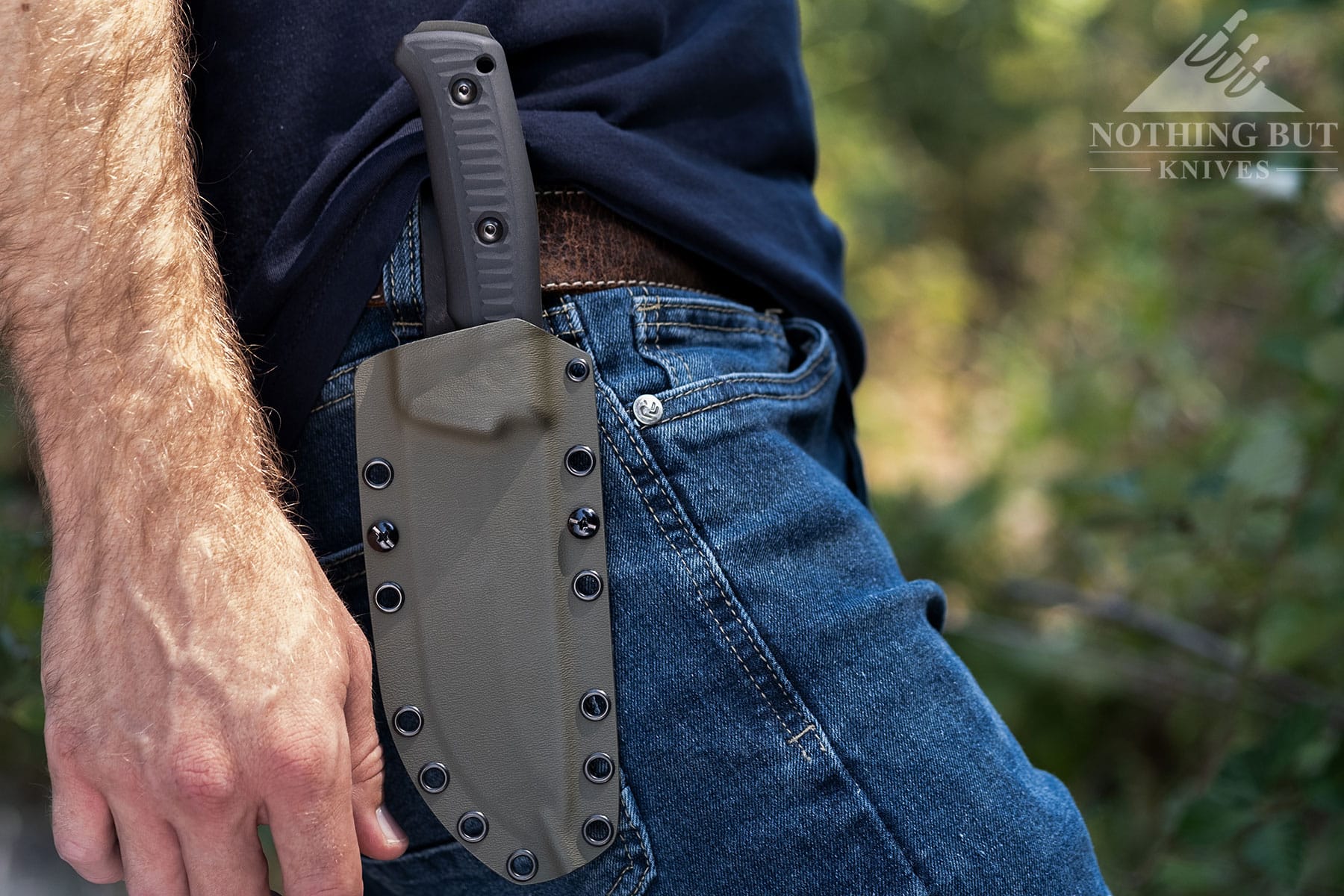
Drawing and sheathing this thing is a cathartic experience. Drawing feels like pulling a lever that launches torpedoes (I assume), and sheathing it is like buckling up to launched into space (again, I assume). And yet, for all that noise, the retention isn’t so strong that I have to fight it.
Vertical Carry Problems and the Drop Rig Plate
The stainless steel plate with a leather loop is probably the most stand out feature, though. I was a little skeptical of that steel piece when I saw it in pictures. That looked like it was just asking to become bent beyond usability after the first rough hike through heavy brush.
I’m not so skeptical now that I’ve handled it. This piece is a thick piece of steel. The Kydex will fail before the drop rig does. I’ll probably fail before this thing, if we’re being totally honest.
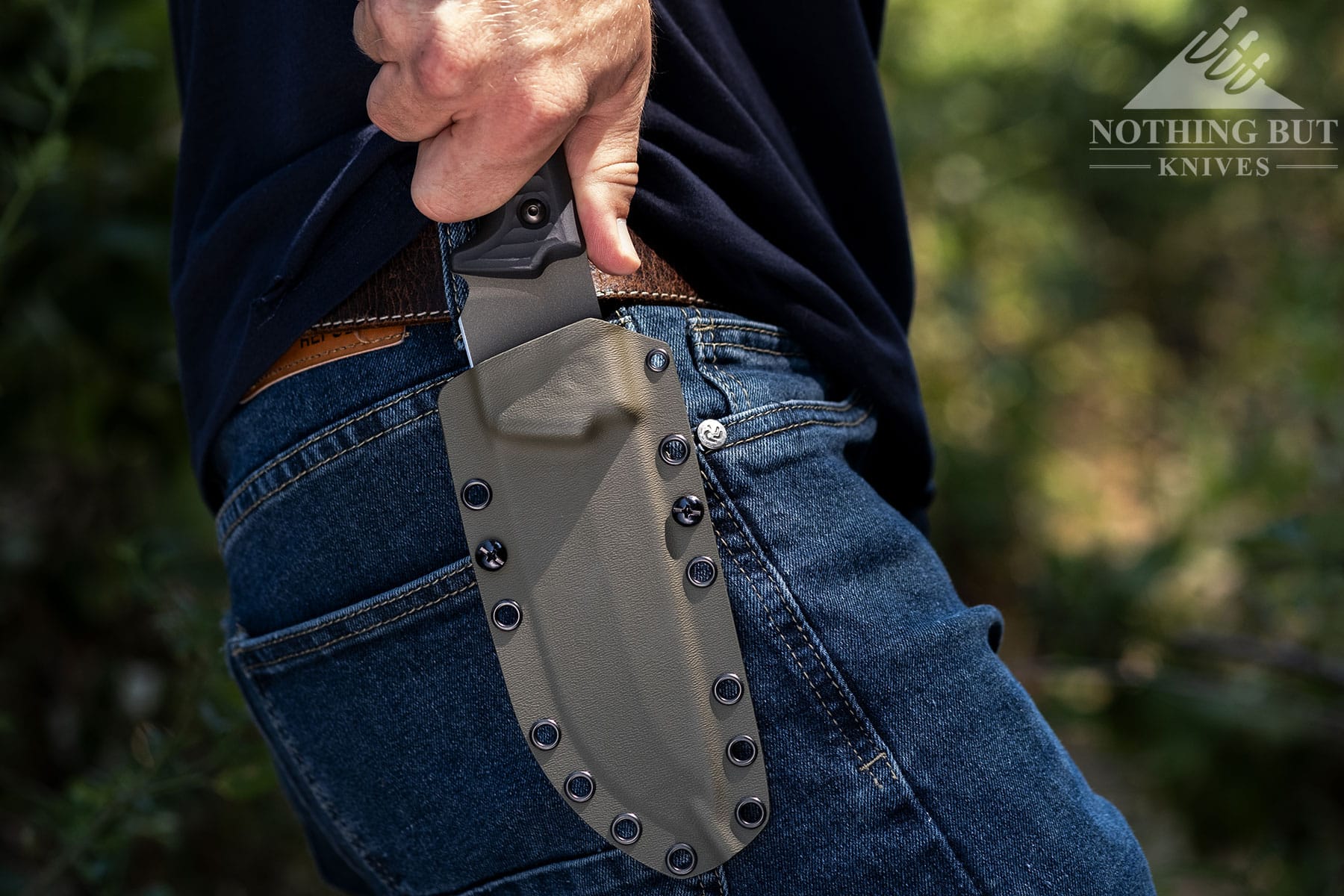
It’s still a vertical-carry knife, though, and that means it has the common vertical-carry issue for me. It rides too high.
It rides well enough that the handle doesn’t punch my side, but I still need to twist my wrist in awkward ways to draw. But even there, the sheath helps some because the leather belt loop is loose enough that I can tilt the whole thing up until my wrist straightens out then push off with my thumb. So it’s easy enough to work around, but I’m straining for things to criticize.
Comparison and Alternatives
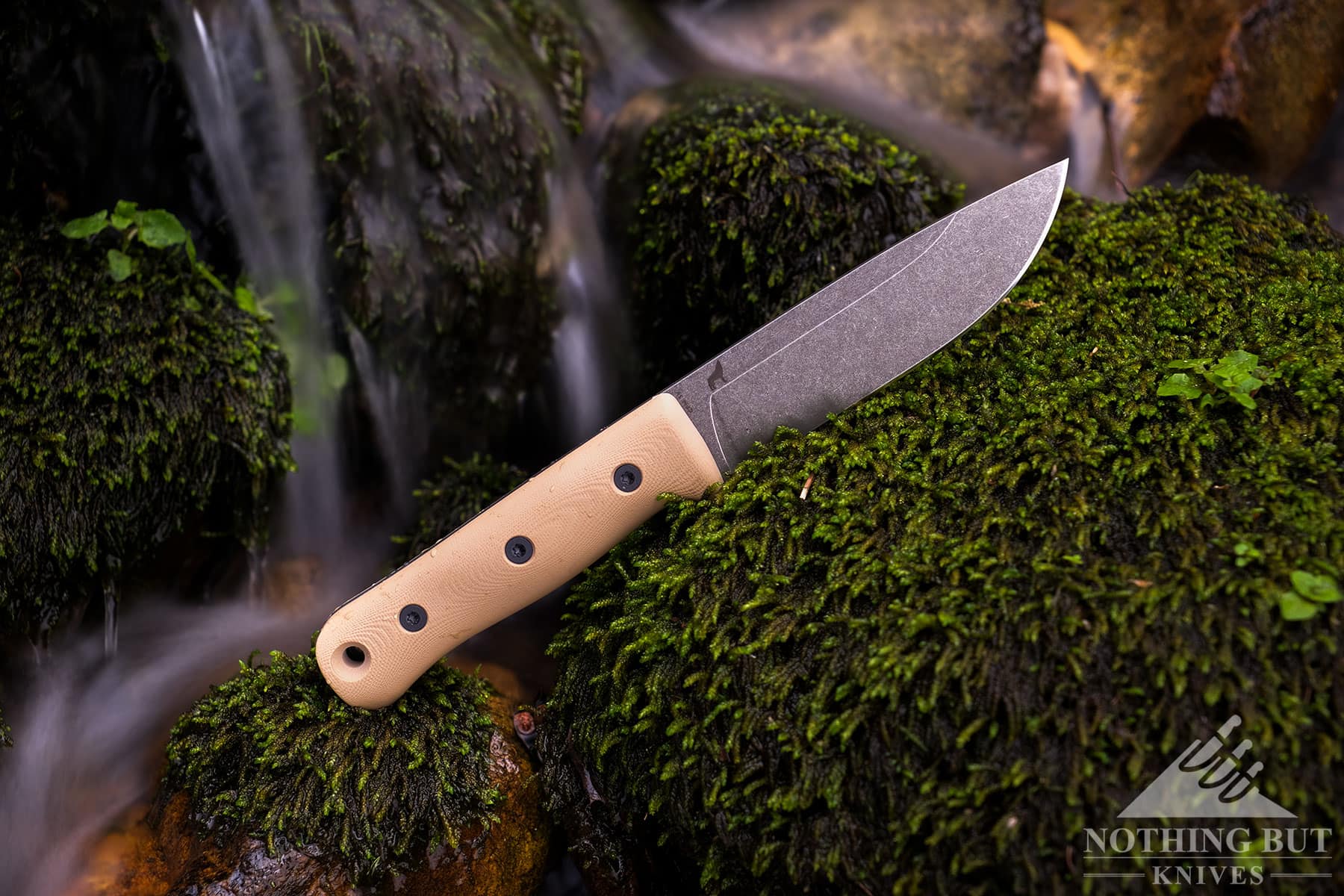
We’re pretty much talking about a survival knife here, so the obvious question for enthusiasts is whether it’s worth getting over the big names like ESEE, or a Becker knife, or literally any Morakniv.
Yes. The fit and finish on the LT5 is better than all of them (Although it’s close with ESEE), and I personally prefer its carry solution to almost anything I’ve encountered so far. It only really loses out to any of them by price, and I think the whole line up is fair in that regard.
Here are some more interesting alternatives:
The Condor SBK has an excellent sheath as well. The designer, Julio Diez, is almost more sheath maker than knife maker. A decision between those two is really a choice between blade grinds (putting aside the facts that the SBK is nearly half the price and made in El Salvador, for whatever those details are worth).
The Reiff F5 is a good look too, although it’s twice the price. The handle shape highlights a different range of tasks as I always find it a lot more comfortable to carve with almost any Reiff knife, but chopping can get awkward (with the exception of the Reiff F6).
Check out our Top Survival Knives article here for more options. We will be adding the Schwarz LT5 to that article shortly.
A Great Knife and a Great Company
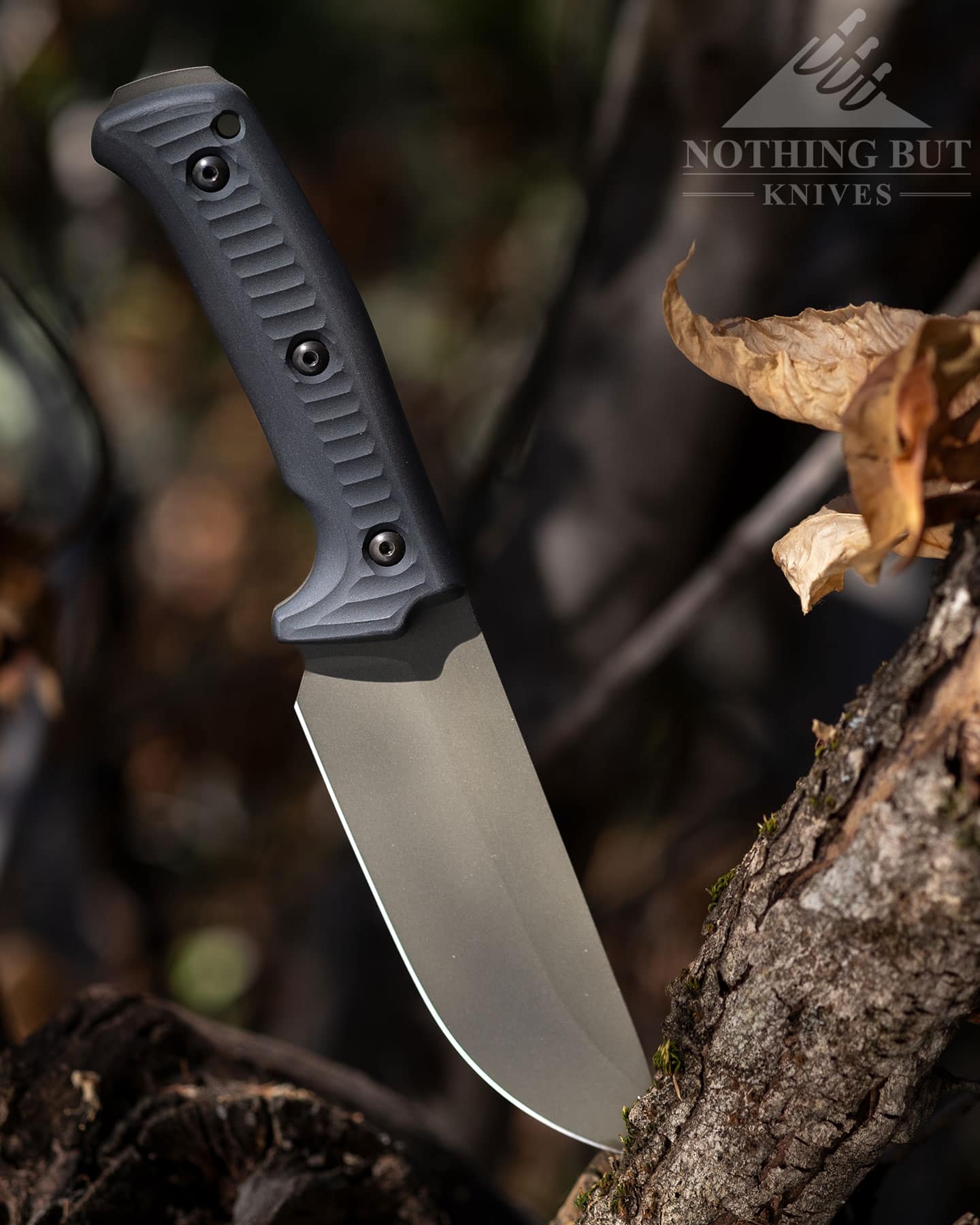
It’s easy for me to like a knife, but sometimes I test a knife that produces a certain feeling in me at every turn. I can’t describe the feeling other than to say that it’s the one that makes me think “this thing is so f-ing cool”.
That’s the Lost Trail 5. It’s not just that it performed well every time I tried a new task with it; I had a blast with it at every turn.
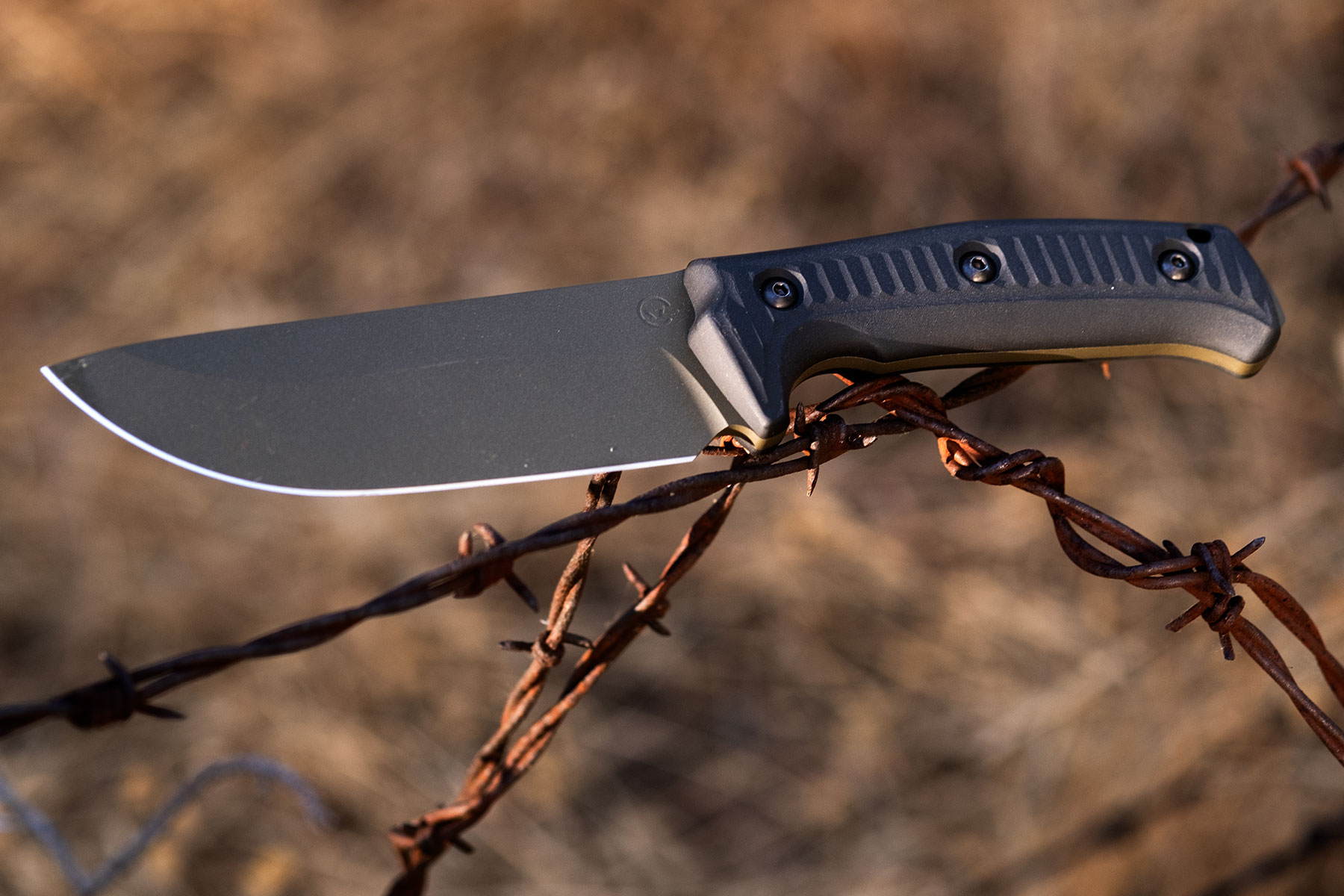
The awkward part for me here is that Schwarz did a really good job not only designing this knife, but describing it. Part of my job as a reviewer is to tell you things about a knife that the manufacturer wouldn’t, couldn’t, or just never thought of.
But I keep finding myself wanting to repeat what Schwarz said about their own knife because, frankly, they are spot on with everything.
It puts me in a weird choice of digging in my heels and criticizing things about the knife just for the sake of criticizing (the finger choil doesn’t fit my index finger perfectly; your move Schwarz!), or just leaning into sounding like a brand shill and confirm that this knife does everything the maker says it does.
